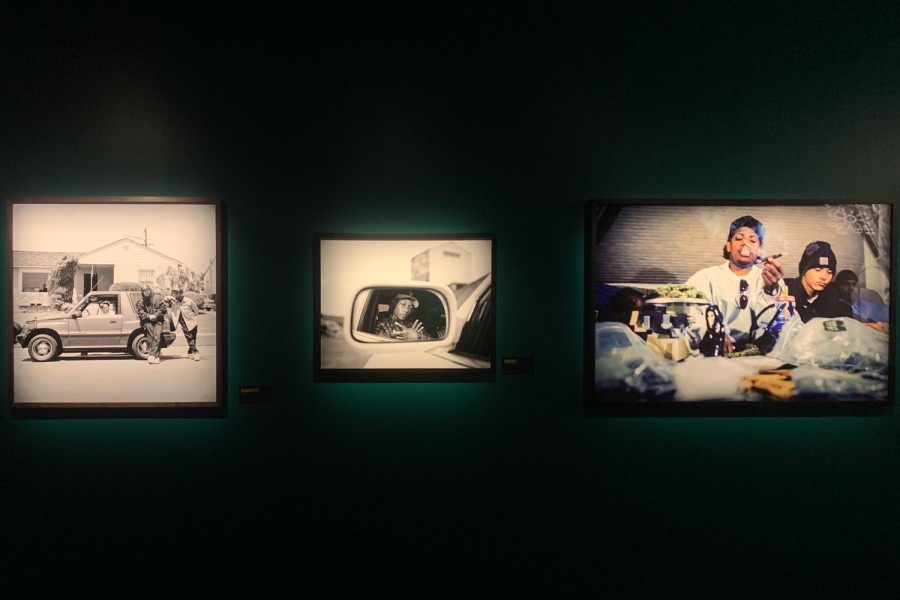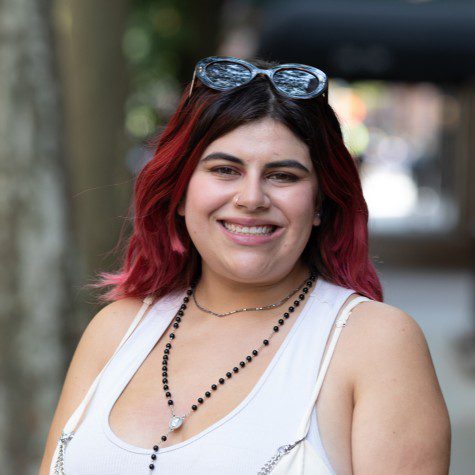‘Hip-Hop: Conscious, Unconscious’ showcases the influence of the genre
Celebrate the history of hip-hop and its global impact at this Fotografiska exhibit, open until May 20.
“Hip-Hop: Conscious, Unconscious” is on display at Fotografiska until May 20. (Natalia Palacino Camargo for WSN)
May 2, 2023
As one of the most prominent genres in the music world, hip-hop has had an extensive influence on fashion, art, photography and other forms of cultural expression. Rumored to have originated “in a Bronx basement party on August 11, 1973,” the rule-defying genre is celebrating its 50th anniversary this year.
In “Hip-Hop: Conscious, Unconscious,” Fotografiska New York, alongside media company Mass Appeal, allows viewers to immerse themselves in everything hip-hop has to offer, with nearly 200 photographs of over 50 artists who have shaped the history of the genre. While the Swedish museum typically showcases the work of photographers, the photographs in this exhibition specifically focus on how hip-hop has grown to become a worldwide phenomenon.
Co-curators of “Hip-Hop: Conscious, Unconscious” Sally Berman and Sacha Jenkins, chief creative officer of Mass Appeal, combine editorial images with more intimate photographs that depict the power of community in fostering talent. The exhibition pays homage to Black and Latine communities, whose talent and practices have often been reappropriated throughout pop culture without due credit. It is organized by era, with images, video documentation, memorabilia and accompanying hip-hop songs divided accordingly.
The exhibit begins by showcasing the collective story of the South Bronx during the ‘70s, at a time when crime rates were high due to gangs like the Savage Skulls and young people turned to music and their communities. The exhibition text playfully uses language that mimics hip-hop lyrics to place viewers in the time period. Mostly set in the Bronx and Brooklyn, the images from this part of the exhibit showcase the humble beginnings of some of hip-hop’s greatest.
Standout photographs include Geoffroy De Boismenu’s black and white photograph “Notorious B.I.G. #01, 1994” of the influential Brooklyn rapper — also known as Biggie — shown smoking a joint and defiantly squinting at the camera. Biggie, arguably the greatest rapper of all time, is captured from a lower angle in the photo. The exhibition’s curatorial approach plays into his larger-than-life persona by having the photo cover a whole wall, allowing him to look over viewers. Chris Buck’s “Jay-Z, Marcy Houses 1998” is another memorable image from the era. While at the time, Jay-Z had already achieved notability within the music industry, he returned to the public housing complex where he grew up for a humorous photo shoot portraying what he would be doing if he hadn’t achieved stardom. The image depicts the billionaire rapper and record producer in an outdoor lounge chair watching a television positioned over a side rail. The casual clothing and scenario make him almost unrecognizable as a prominent image of success in the industry.
The exhibit continues with the genre’s expansion to the West Coast, highlighting hip-hop’s reinvention in Compton, California. This section features images of Tupac Shakur, the Wu-Tang Clan, N.W.A and Dr. Dre. Shawn Mortensen’s image of a young Snoop Dogg pointing a gun at the camera next to a dog is representative of West Coast hip-hop’s rebellious style. Despite its more laid-back sound, gang violence and anti-police sentiment were popular themes for West Coast rappers at the time. Through fashion and anti-establishment songs like “Fuck tha Police” by N.W.A and “Gangster Love” by Shakur, many of these West Coast rappers curated a bad boy image. This hard-edge look comes across in many of the photographs, particularly in T. Eric Monroe’s “Friendship-Tupac Shakur, Biggie Smalls & Lil’ Cease” in which the rappers are pictured wearing oversized shirts that read “I’M A BAD BOY!” and Shakur gives a middle finger to the camera, obscuring his face.
The exhibit finishes off with a section reserved for contemporary hip-hop, detailing the genre’s transformation into a global success. In this section, viewers can see photographs of women artists like Nicki Minaj, Cardi B, Megan Thee Stallion and City Girls, as well as young artists like Lil Nas X, A$AP Rocky and the late Mac Miller. This newer generation comes across as more playful, with highly aestheticized images, fun poses and colorful designer clothing. Recognizable images include Sam Balaban’s “IGOR,” which depicts Tyler, the Creator dancing in a neon yellow suit and a blonde wig during a concert in 2019, and Angela Boatwright’s black and white portrait of Minaj. Minaj is pictured sitting inside a diner humorously sticking her tongue out to the camera, staring directly at the viewer in confrontation. The exhibit’s presentation of saturated high-quality images and grandiose photoshoots wraps up its rags-to-riches story with dazzling success.
The exhibition is a celebration of hip-hop and an acknowledgment of Black culture as the founding concept behind many trends across music, fashion and art. While inclusivity and intersectionality are celebrated today, the beauty of these practices has not always been recognized.
Hip-hop has transformed how we speak and dress, and while prejudice against the genre has regarded it as deviant or low-brow, this exhibition shows the true beauty behind the genre. It tells a story of how community and innovation can arise from difficult circumstances and personal hardships.
Contact Natalia Palacino Camargo at [email protected].
























































































































































